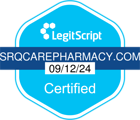Pediatric Compounding
By Brittany A Duke, PharmD
Medically reviewed by Rosanna Sutherby, PharmD
Do you find it challenging to give your child medicine? Do you often wonder what to do when a commercially available product is not available in a flavor, strength, or dosage form that suits your child? About 9% of children ages 6 to 11 years cannot swallow a small tablet. This limits their options for pediatric medicines. Fortunately, your pediatric compounding pharmacist can help solve these challenges by creating customized medications that are easy for your child to take. Read on to learn more about:
- Why do you need pediatric compounding?
- What are common uses for pediatric compounding?
- What are common compounded pediatric formulations?

Why Do You Need Pediatric Compounding?
Even if a chewable or liquid medicine is easy to swallow, your child may not like the taste and may refuse to take it.
Pediatric compounding pharmacists can make your children’s medicines easy to take. For instance, instead of a
standard pill, your pharmacist can compound a liquid that is tasty and easy to swallow or a topical cream or
ointment that addresses your child’s needs.
What are Common Uses for Pediatric Compounding?
Some common uses for pediatric compounding include:
- Sensory processing disorder
- Food allergies
- Medically prescribed diets
Sensory Processing Disorder
Sensory processing disorder (SPD) is a neurological condition that commonly accompanies developmental issues, including:
- attention-deficit hyperactivity disorder (ADHD)
- autism
- fragile X syndrome
Children with SPD may have reactions, such as gagging, vomiting, or screaming, to particular tastes or textures.
Luckily, your compounding pharmacist can offer solutions. Sometimes, something as simple as changing the color
or flavor of the medicine can do the trick. Other times, your compounding pharmacist can prepare a variety of
dosage formulations, including:
- capsules
- solutions
- suspensions
- tablets
- topical preparations
Many children with SPD may also be sensitive to gritty textures. In these instances, your compounding pharmacist
can grind your child’s medicine with a mortar and pestle to make it smoother, especially in the cases of
suspensions and lozenges. Oral preparations can be bypassed altogether by compounding the medication into a
cream, ointment, or patch that allows the medicine to be absorbed through the skin.
Food Allergies
Another important reason for compounding pediatric medicines is food allergies. About 8% of children have
allergies to foods, including:
- cow’s milk
- eggs
- peanuts
- soy
- tree nuts
- wheat
Your compounding pharmacist can provide solutions for pediatric medications for children with food allergies. For
instance, many commercially available liquid medicines contain high-fructose corn syrup or sorbitol. These
ingredients can trigger an allergic reaction in children with corn allergies. Your compounding pharmacist can
prepare your child’s medication with solution or suspension bases that do not contain these allergens.
Medically Prescribed Diets
Children with special dietary needs often need customized medications that exclude certain ingredients. Your
compounding pharmacists can prepare medicines that align with your child’s dietary needs. The most commonly
seen diets in compounding pharmacies include:
- celiac diet
- ketogenic diet
Did you know that celiac disease is present in up to 3% of children under the age of 15 years? If your child has
celiac disease, they must follow a gluten-free diet. Unfortunately, many commercially produced medications
contain gluten. It is often difficult to be sure if a medicine contains gluten because ingredients containing gluten
may be used during the manufacturing process, or gluten may be hidden in additives, such as:
- dextran
- dextrin
- pregelatinized starch
- sodium starch glycolate
Your compounding pharmacist can prepare gluten-free formulations for your child.
A ketogenic diet is used to reduce seizure activity when anti-seizure medicines do not work. The ketogenic diet is a
high-fat and low-carbohydrate diet that helps increase ketones from fat metabolism. If your child is on a ketogenic
diet, you need to ensure that their medicines have a minimal amount of carbohydrates. To remain in line with your
child’s diet, your pharmacist can compound medications without added carbohydrates.
What Are Common Compounded Pediatric Formulations?
Sometimes, getting your child to take commercially available medications can be challenging, and medicines do
not work if you don’t take them. Fortunately, compounding pharmacists provide an array of options to address
your child’s needs. Some of the most compounded pediatric formulations include:
- emulsions
- gummies
- lollipops
- rapid-dissolve tablets
- solutions
- suppositories
- suspensions
- transdermal gels
Promethazine gel is a popular alternative to suppositories for nausea and vomiting. Anesthetic lollipops are often
used for sore throat, and diaper rash ointments are a frequent request. Children undergoing dental treatments
sometimes need sedative preparations that your pharmacist can custom make for your child. In addition to
lollipops, anesthetics can also be compounded into topical gels, creams, or ointments that can numb the skin
before injections, stitches, or other painful procedures.
Some additional medicines commonly compounded in pediatric-friendly dosage forms include:
- atenolol (Tenormin)
- atomoxetine (Strattera)
- losartan (Cozaar)
- mefloquine (Lariam)
- sildenafil (Viagra, Revatio)
- tizanidine (Zanaflex)
- valacyclovir (Valtrex)
Summary
Pediatric compounding allows your pharmacist and pediatrician to work together to create medicine that is
customized to your child’s needs. When there are no commercially available options, a compounding pharmacist
can offer solutions for your child’s unique situation.
About Author:
Dr. Brittany A Duke is a Pharmacist and freelance health writer with over 5 years of experience in medical writing. Prior to her new position as a Global Regulator Manager for Bristol Myers Squibb, she worked at the FDA for 4 years. At the FDA, she was a Medical Writer for the Office of Surveillance and Epidemiology, Division of Medication Error Prevention and Analysis, Rapid Response Team. There, she was responsible for the development of regulatory documents including guidance, regulations, policies, and procedures that affect the drug approval or post market product safety surveillance and evaluation process.
References:
- Heitman T, Day AJ, Bassani AS. Pediatric Compounding Pharmacy: Taking on the Responsibility of Providing Quality Customized Prescriptions. Children (Basel). 2019;6(5):66. Published 2019 May 4. doi:10.3390/children6050066 https://www.ncbi.nlm.nih.gov/pmc/articles/PMC6560512/
- Fields SW. Compounding for pediatric patients. Pharmacy Times. 2006;0(0). https://www.pharmacytimes.com/view/2006-09-5890
